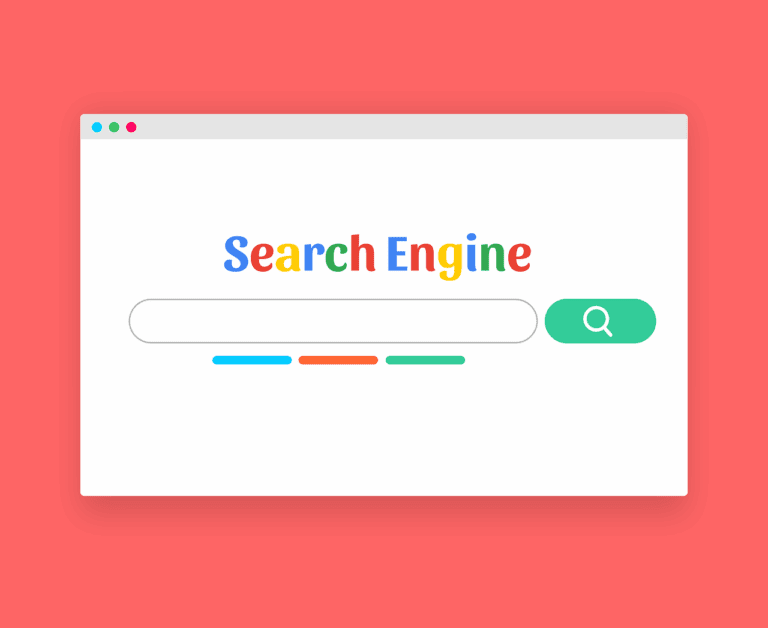89% of B2B buyers use the internet during the buying process and by the time they take action on a website, they’re already 57% of the way through their buying journey. If you haven’t built a relationship with your audience by this stage, it’s already too late. So how do you reach customers before they take action online? The answer is with a B2B content marketing strategy.
Content marketing plays a major part in the promotional mix for B2B businesses. 81% report that their blog is important or critical in generating leads. For content marketing to be successful having a strategy is vital but surprisingly only 46% of marketers say they have a B2B content marketing strategy in place.
How A B2B Content Marketing Strategy Will Benefit Your Business
On average, B2B researchers do 12 searches prior to engaging on a specific brand’s site. That leaves plenty of opportunities to build a relationship prior to them taking action.
The benefit of building relationships early on is that, with the right content, you build trust and authority. So, when a customer is ready to engage, they are more likely to re-visit your website because you’ve educated them along the way and positioned your business as an expert.
This approach is proven to deliver results for businesses that get it right. Content marketing costs on average 62% less than traditional advertising and conversion rates are on average 6x higher. Leads generated through content marketing also cost 61% less than leads generated using more traditional outbound methods like cold-calling and cold-emailing.
The benefits to your business of implementing a content marketing strategy are deeper customer relationships and a higher volume of leads at a much lower cost per lead.
Plus, because you’re educating customers along the way, when they come to engage they are highly qualified and have a good knowledge of your product or service. This enables your sales team to quickly identify customer pain points, have more meaningful conversations, and ultimately close more deals.
What’s Included In A B2B Content Marketing Strategy?
A well planned and researched B2B content marketing strategy defines and addresses the fundamental elements that ensure content marketing success. These include:
- Your content marketing objectives
- Who the target audience is for your content
- What content your competitors are publishing
- The keywords and topics you will write about
- The types/format of content you will publish
- How you will promote your content
- How you will measure the success of your content marketing
When our clients choose to engage our B2B SEO services we follow our own framework of research, create, promote. Doing this ensures that we’ve covered all of the elements that make up a well-researched and fully planned SEO and content strategy.

The planning stage is just as important as creating the content as businesses with a documented strategy are 313% more likely to report success. For businesses serious about using content marketing to increase sales having a documented strategy is critical.
How To Create a B2B Content Marketing Strategy
A marketing strategy document should begin by clearly setting out the objectives for the marketing activity. Setting SMART objectives will ensure that you can measure the success of content marketing efforts and re-invest budget in the best performing areas. Examples of SMART objectives that might be set for content marketing activity include:
- Increase organic traffic from blog posts by 200% in the next 12 months
- Generate 50 leads per month from new eBook downloads
- Increase referral traffic from social media by 300% in the next 6 months
With SMART objectives in place our 3 phases of research, create, promote can be used to create a content marketing strategy that identifies your ideal customers, the content needed to engage them and the promotional channels required to reach them.
Phase I: Research
Get a clear understanding of who you are writing for, the types of content your competitors are writing (or not writing) and the topics and keywords you will target with blog posts and downloadable content.
Research The Audience For Your Content
Before creating any content it’s essential to define and research the audience you are writing for. Doing this will ensure that you are using the right language and terminology, covering the right topics and writing content that solves actual pain points that your customers have. To do this we recommend creating customer personas.
“71%of companies who exceed revenue and lead goals have documented personas.”
Stephen Zoeller
Customer personas are part-fictional representations of your target customers. Personas should be created for each type of person involved in the sales process. This could mean creating a persona for a marketing manager, a marketing director, a salesperson and a finance director.
Customer personas should be based on real information that you already know and information that is your best assumption. Personas should include job title, responsibilities, pain points, challenges, websites they visit, the social media channels they use and magazines they read, and anything else that’s relevant.
This information can be gathered by speaking to your existing customers, by carrying out desk research and by gathering information from everyday interactions with potential customers.
Once these personas have been created you will have a good idea for topics to write about based on their pain points, challenges and motivates. Your content should aim to help resolve these issues, or at least point them in the direction of your product or service.
Research The Content Your Competitors Are Creating
93% of marketers are using content marketing so it is highly likely that your competitors already have a content marketing strategy in place. Auditing competitors’ content will help when coming up with content ideas based on what’s working for them. It will also enable you to identify gaps that their content does not cover that you can fill. Some of the key things you should be looking for are:
- The types of content they create
- What topics they are covering/not covering
- The quality of their content
- How in-depth their content goes
- How often they create new content
- How often they post on social media
- If their content is SEO optimised
- If they are guest posting content on other websites
To carry out this research there are plenty of online tools that tell you which keywords they are targeting, where their backlinks are coming from and which pieces of content are getting shared the most on social media. Buzzsumo is a great content research tool that you can use to find some of this information.
We recommend doing an audit of 5-10 competitors to get a complete picture of the content landscape. These competitors should be your direct competitors, those that are targeting the same audience with their products or services as your business.
Research & List Appropriate Keywords To Target
Keywords play an important role in content marketing, about 71% of searches start with a generic keyword vs a branded keyword. While you might have some ideas for topics and titles from your customer personas and competitor research, you need to target the right keywords so your content is found when people search Google.
Keyword research can be broken down into two activities, finding keywords and evaluating keywords. Finding keywords can be done using a tool like SE Ranking. A tool like this will suggest relevant and related keywords, estimate monthly search volumes, analyse the difficulty of each keyword and predict how much businesses are paying if they are targeting a term with a Google Ads campaign.
When carrying out keyword research you should also think about the sentiment and intent of the search too. There are three categories of keywords which are navigational, informational and transactional. These are explained below.
| Navigational | Informational | Transactional |
| The objective is to reach a certain site | The searcher wants to find information to their query using a number of sites | The intent is to perform some kind of transaction online |
| Facebook, NY Times, Entrepreneur | “How to build a website”“Email software reviews” | “Get insurance quotes”“Buy iPhone online” |
The second part of keyword research for content marketing is evaluating those keywords. While you may have a long list of keywords you won’t be able to target them all. Sometimes you simply won’t be able to out-rank the sites at the top, especially if you are a small website.
Domain authority and backlinks are important to take note of. The Moz bar is a great Chrome extension that you can use to evaluate sites in the search engine results pages. Using a tool like this will help you to be strategic with your keyword targeting to get the best return on your effort.
One little known trick that’s really useful for finding new keywords and for generating ideas for headings within your copy are Google’s suggested searches. These appear when you begin to type in the search bar and also at the bottom of the search results pages. These are terms that are searched regularly on Google so are definitely worth including in your content marketing strategy.
Phase II: Create
Use the results of the research phase to develop and create content that will resonate with your target audience. Map out content to the different stages of the sales funnel and create an editorial calendar that sets out when content will be written and published, the titles and topics for each piece of content and the format for the content (blog posts, eBooks, videos, infographics).
Create Content That Matches Each Stage Of The Sales Funnel
Because customers pass through different stages on their purchase journey it’s important to create content for customers at every stage of the sales funnel. The sales funnel has 4 stages which are awareness, consideration, close and action. Creating content for each stage could include making blog posts, infographics, videos, eBooks, reports, whitepapers and checklists.
Using this funnel approach to content marketing will ensure that you are generating new leads at the top, nurturing them in the middle and converting them at the bottom.
Awareness – Help Prospects To Define Their Problem
Prospects at this stage are at the beginning of their research. They will be trying to define their problem and searching for answers to their pain points, usually by reading blog posts across a range of sites. DemandGen found that 47% of B2B buyers read 3-5 blog posts or content pieces before speaking with a salesperson. This shows how important it is to include blog posts in your B2B content marketing strategy.
Blog posts written following SEO best practices will attract visitors to your website once they start to rank in the search engine result pages. Creating a broad range of content that draws on earlier keyword research is a good strategy and will give you wide coverage across a range of topics that your target audience is researching.
82% of marketers who blog see positive ROI from their inbound marketing.
Hubspot
Other actions that can be taken to engage prospective buyers at this stage include creating infographics, podcasts, writing guest blog posts and using social media to promote and amplify the content published on your own website.
Consideration – Show Prospects How To Solve Their Problem
Having attracted visitors to your website through content that identifies and explains their pain points the next step is to convert them into a lead. This means getting visitors to exchange information like their email address and phone number for some high-value content that promises to tell them how to solve their pain points.
One of the most common types of content used to do this is an eBook. An eBook is usually in PDF format and covers a specific topic in detail. This differs from short-form content like blog posts as eBooks are a comprehensive guide to a topic that draws on research and evidence. eBooks are the second most common form of content used by marketers after video.
There are no guidelines for eBook length but generally, they follow the format of a novel with chapters and images to support the text. If you have done your customer research and created customer personas you will know what their pain points are and the messages that will resonate with them (and get them to download your eBook).
More recently, webinars have been an effective way to generate leads online. Similar to an eBook a webinar should cover a specific topic and have clear outcomes for what the viewer will learn from watching. Webinars can be anywhere from 30 minutes to an hour. Asking customers to sign up with their email address means you can follow up with them afterwards too.
Close – Leverage USP’s & User Generated Content For Better Sales Enablement
By now customers should know exactly what their problem is and how to solve it (by buying your product or service). It’s time to close the deal. Because you have provided value and have helped to educate customers along their journey with blog posts and eBooks they will be much more open to receiving and acting on sales-focused emails, calls and content.
Offering a 1-1 product demo or call is a great way to engage customers and better understand their exact needs. However, you shouldn’t just follow up a demo or call with sales emails and wait for the customer to buy. There’s still an important role for content at this stage too.
Leading businesses have a range of content available to help get the deal over the line. Case studies, price comparisons, testimonials and personalised proposals where necessary should be used to close the deal. A good salesperson will know what’s causing a potential buyer to stall so providing your sales team with the right content to help overcome these objections is crucial.
Despite this being a critical stage in the customer journey, it is often overlooked when it comes to content creation according to the latest results of the Content Marketing Institute survey.
Action – Delight Customers & Turn Them Into A Lead Gen Channel
This part of the funnel focuses on new customers. Many businesses think that once the deal is signed they can move on to finding the next customer. This is a dangerous approach and risks frustrating and alienating customers that have just signed up.
To avoid this from happening, content such as how-to guides, pre-recorded or live video training sessions and downloads are great ways to engage existing customers. It can also help you to gain feedback and reviews that can be added to your website and social profiles.
Happy customers are also more likely to refer your business to colleagues and friends. 91% of B2B purchasers’ buying decisions are influenced by word-of-mouth so creating a referral scheme is a great way to generate high-quality leads that have already heard good things about you.
Similarly, user-generated content such as reviews and testimonials are perfect for sharing on social media as part of your overall social media strategy, for using in eBooks and for sharing with prospective customers at the Close stage. Existing customers have a lot to give when it comes to creating content for your B2B content marketing strategy.

Phase III: Promote
Maximise the reach of your content and increase the opportunity for lead generation by promoting it through free and paid channels.
Promote Your Website Content
A key part of every content marketing strategy is promoting content to maximise exposure among your target audience. SEO optimised blog posts will generate organic traffic, although relying on organic traffic alone isn’t a sustainable strategy, partly because you can never be sure where your content will rank.
When creating a strategy we use 4 promotional tactics which are social media, guest blogging, email marketing and digital advertising. Each plays an important role in helping to get your content seen by more people and getting it shared online.
Social Media – The most common content marketing delivery mechanism is social media which is used by 87% of marketers. Every piece of content you create should be included in your social media strategy. When posting on social media we use a 4-1-1 rule.
The 4-1-1 rule states that for every 6 social media posts 4 will link to 3rd party content, 1 will link to content on your website and 1 will be a promotional post. As you create more content you can start to post more of your own. The aim is to generate engagement on your posts (likes, comments and shares) while also referring traffic back to your website.
Guest Blogging – Guest blogging is a really important tactic because it generates traffic and links back to your website. Usually, guest blogging requires writing an original piece on a topic you specialise in that is published on a relevant industry website. You will receive a link back to your website in the author bio section which helps with SEO and site authority.
Sometimes sites will allow you to post the article on your own site once it has gone live on their site. This means that you won’t get any SEO benefit from the post but you will still have a valuable piece of content on your site that you can share with readers.
Email Marketing – Sending content to your email subscribers is a great way to get your content being shared and read by more people. If your content is of high value, subscribers will share it internally or even better share it on social media.
The more people sharing your content the more people will read it and the more people you will be attracted to your funnel and turn into leads. According to Campaign Monitor, email marketing has the highest return on investment for small businesses.
Digital Advertising – Sometimes we choose to give certain pieces of content a boost with digital advertising. This works especially well as part of a brand awareness campaign for new businesses or businesses that want to move into new sectors and get their name out there.
68% of marketers state that paid advertising is “very important” or “extremely important” to their overall marketing strategy.
LinkedIn’s sponsored content option is a useful tool that allows you to choose a highly specific audience to advertise to. Using your customer personas you can create an audience and choose a specific piece of content that will drive traffic back to your site.
Measure The Success Of Your Content Marketing Strategy
With the right strategy in place, content marketing is a highly effective lead generation tactic which is why 39% of a marketing budget is spent on content marketing by the most effective B2B marketers.
Understanding whether your content marketing campaign has been successful or not comes down to measuring success against your original SMART objectives. 75% of marketers are using reports to show how revenue is impacted by content marketing campaigns.
Every content campaign should have a goal to measure against. Some of the goals we’ve helped companies work towards are:
- Increasing organic traffic
- Increasing traffic from social media
- Generating more backlinks to the website
- Generating brand awareness among a certain audience
- Generating more inbound leads
Measuring the right metrics is important too because they will tell you where to invest your budget and where improvements need to be made. Our inbound marketing performance metrics post sets out some key metrics to track when running a content marketing campaign.
Common B2B Content Marketing Challenges
In theory the process of creating and implementing a B2B content marketing strategy may seem simple enough but there are some common challenges businesses face when it comes to putting it into practice.
The top issue for businesses is finding the time to create and publish high-quality content. That’s why as many as 70% outsource at least one content marketing activity, with content creation being the activity outsourced the most followed by content distribution.
Technology can also be a barrier for businesses wanting to start or ramp up content marketing activity. The top 3 technologies that marketers value the most when it comes to content marketing are analytics software, email marketing software and social media publishing tools. Without these, it’s difficult to measure ROI and measure content success.
Overcoming these challenges can be difficult both for SME’s and enterprise organisations. Engaging the services of a content marketing agency is a common solution, even if you choose to eventually take content creation in house.
Conclusion: Getting Results From B2B Content Marketing
For B2B businesses to fully capitalise on the benefits of content marketing it’s essential to have a strategy in place. Ad hoc blogging and occasional social media posts simply won’t cut it. Being consistent and efficient with budget and time is essential which is why 73% of organizations have someone in place to oversee their content strategy.
Content marketing has the potential to deliver more leads at a much-reduced cost for B2B businesses who get it right. Creating a strategy that defines who you will target, the content that will be created and how that content will be promoted is the first step to delivering significant, recurring growth for your business and now is the time to put that in place.
Contact our team to find out how we can help you grow your business with content marketing.





